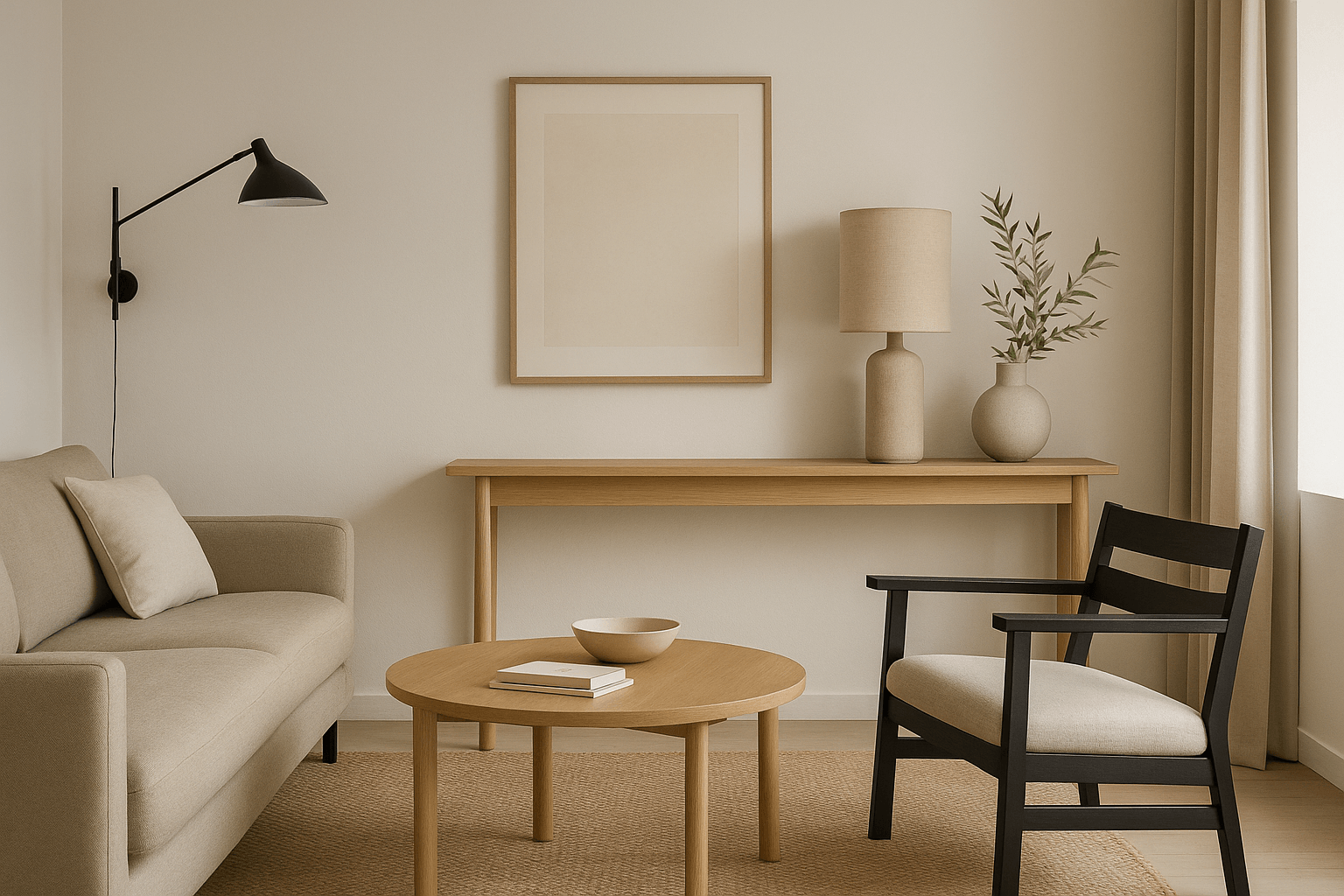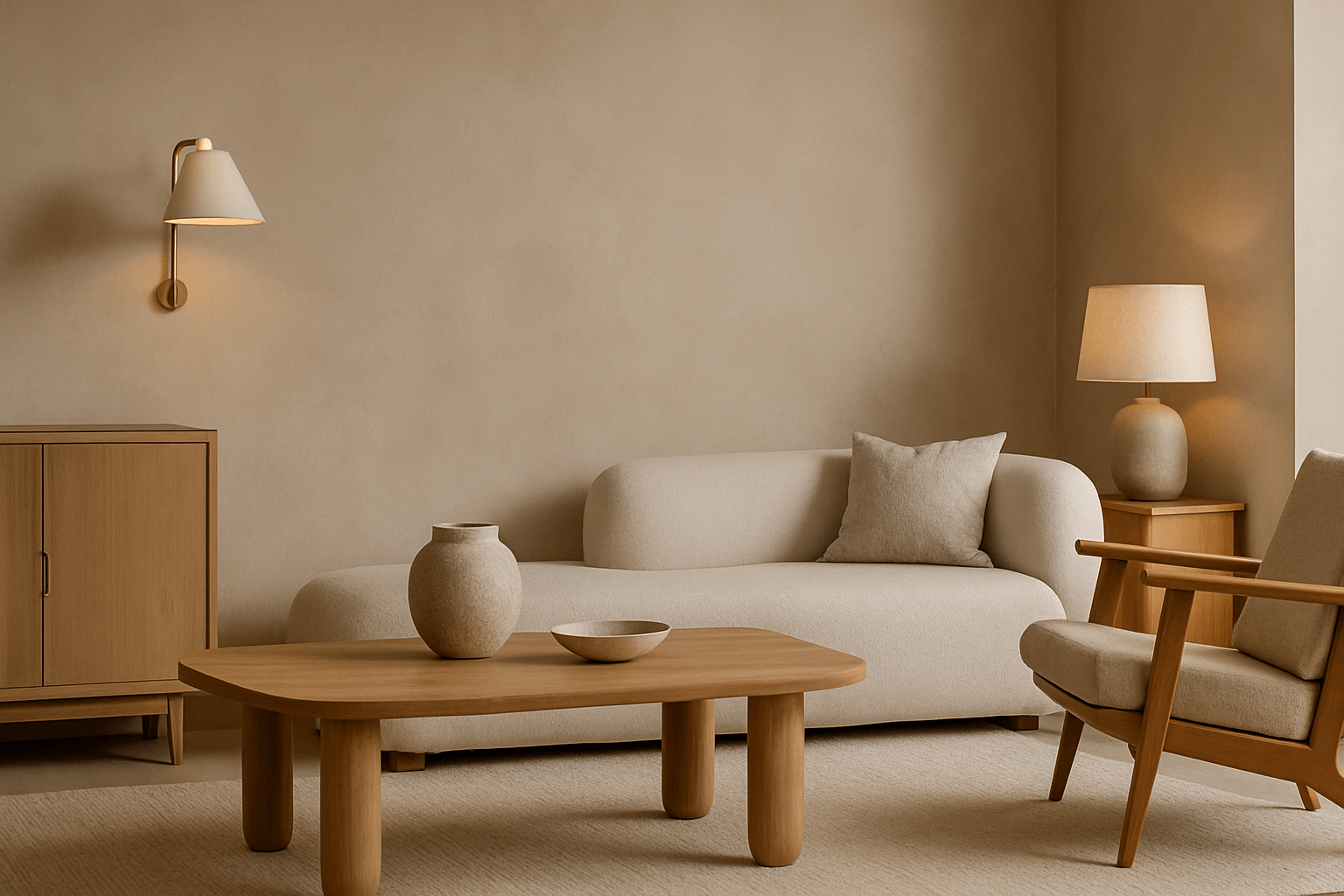The Subtle Power of Symmetry
Symmetry brings a visual rhythm that creates calmness. It works by establishing focal points—like matching side tables, twin sconces, or mirrored artwork—and anchoring your eye to them. A symmetrical layout can make any room feel intentional and grounded, even with minimal décor.
When to Use Symmetry
It’s especially effective in areas meant for relaxation—bedrooms, living rooms, even hallways. Matching table lamps on either side of a bed or balanced pendant lights above a kitchen island help reinforce a serene atmosphere.
Soft Symmetry: Imperfect, but Balanced
Modern spaces often favor soft symmetry: the suggestion of balance without rigidity. For example, pair a statement lamp on one side of a console with stacked books or a plant on the other. Different forms, equal weight.
Materials That Echo
Use repetition in materials to reinforce symmetry. Two travertine bases with varying lamp styles can still offer a balanced aesthetic. You’re drawing the eye into harmony, not duplication.
Asymmetry as a Statement
Even in a symmetrical layout, intentional asymmetry—like an off-center artwork—can create tension and interest. The key is to keep one dominant line of balance while letting other elements play.
Lighting’s Role
Wall sconces, chandeliers, and table lamps are key to maintaining symmetry in spatial composition. Balanced lighting also means functional comfort: equal light distribution makes the whole space feel cohesive and calm.
Conclusion: Symmetry Is a Mood
It’s not just about placing objects—it’s about placing peace. When done well, symmetrical design supports the kind of slow living that modern interiors strive for. Calm, consistent, and always composed.
















